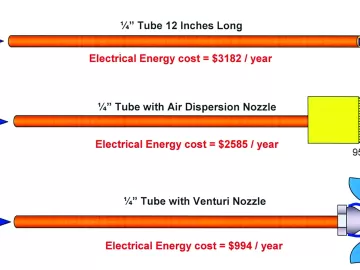Vale Thompson Turbo Compressor Upgrades
Vale in Thompson, Manitoba, Canada has reconfigured a system of large turbo compressors in their mining, milling, smelting and refining operation and gained very large energy savings through a series of improvement projects. In addition, these projects qualified for some significant financial incentives from their local power utility. Vale is a large multinational mining company with headquarters in Brazil. Vale operations focus on the production of iron ore, coal, fertilizers, copper and nickel. The Thompson Manitoba operations consist of mining, smelting, milling, and refining of Nickel in the 250 acre complex that employs 1,500 people.












